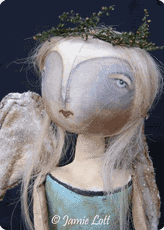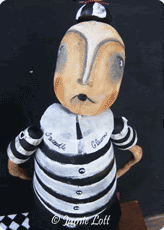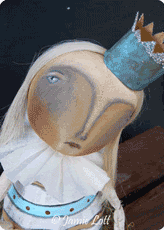
Click on The Bird Girl image above for more info on this famous statue
Plantation History
On December 4, 1753, John Mullryne of Beaufort, South Carolina, requested 500 acres on the south side of Midway River, Georgia, stating that he was "desirous of becoming a planter in the Colony." The land was granted, and by 1771, John Mullryne and his son-in-law, Josiah Tattnall, owned approximately 9,920 acres in Georgia, stretching from Ebenezer in the north to Sunbury in the south. Included in their property were the 600 acres named "Bonaventure" or "Good Fortune," three miles from Savannah on St. Augustine Creek. Bonaventure became the family home.
All, however, was not Good Fortune. On January 7, 1771, the plantation house burned; it burned again in 1800.
In October, 1779, the plantation became a hospital for the French troops under Count Charles d'Estaing in their attempt to capture Savannah from British control; many of these French troops probably lie buried at Bonaventure. It was from here that the remnants of the defeated French forces departed.
It was Josiah Tattnall, Jr., who returned to Bonaventure and bought the property in 1786. He had never gotten over his love of Georgia even when his family, who were loyal to King George III, returned to England. It is even said that when the family boarded the ship that would return them to England a young Josiah Jr. jumped overboard and tried to swim ashore. He was rescued from the sea either from certain death or a successful escape. It wasn't until his university years as a student at Eton many years later that he approached his father about returning to his beloved Georgia. And while he requested his father's permission to return to Georgia and fight with the Patriots, he eventually left England without it.
Josiah Jr. met and married Harriet Fenwick, introduced island cotton from the Bahamas, was elected state senator, and in 1801 was elected governor of Georgia.
Sadly it was the second burning of the home at Bonaventure in 1800 which affected Josiah Jr and his wife, Harriet. According to legend, it occurred during a dinner party hosted by the couple when Josiah calmly announced to his dinner guests that it would be necessary for their party to be moved outside. Tables and chairs were moved onto the lawn well away from the home, the burning of which provided light for the party. Toasts were made to the family and to the home itself, champagne glasses shattered against the nearby oaks as the home burned to the ground. Today, it is said that those passing by Bonaventure at night can can still hear the faint sounds of laughter and the shattering glasses. The sounds from that final, and perhaps eternal, dinner party.
It was only two years later in 1802, that Harriet died and was buried beside four of her children in the family plot at Bonaventure; officially Harriet was the first adult to be buried in what was to become Bonaventure Cemetery. In 1803, Josiah died at Nassau; he was returned to Bonaventure to be buried with his family. The surviving children of Josiah, Jr., and Harriet Edward Fenwick, Josiah III, and Harriet Tattnall were sent to England to live with their grandparents.
In 1817, the eldest son, Edward Fenwick, returned to the plantation, which he possessed until his death in 1832. Upon his death, Bonaventure became the property of Josiah Tattnall III.
Savannah businessman, Peter Wiltberger purchased Bonaventure from Josiah Tattnall, III with the intention to develop a public cemetery on 70 acres, including the Tattnall Family burial ground which had been used for burials since 1794. The cemetery was designed around the ruins of the Tattnall mansion using the existing live oak tree lined roadways to provide access and separate the major cemetery sections.

The Oak Trees
Bonaventure has long been known for the massive live oak trees with arched limbs covered in Spanish moss overhanging her roadways. It is said that these oaks, planted by Colonel Mulryne as a wedding gift to his daughter Mary upon her marriage to Josiah Tattnall, were planted in the shapes of an M entwined with a T to celebrate the union of these two families who had been friends for many years back in Charleston. Historical documentation has proved that many of the live oak trees in Bonaventure today are nearly 250 years old.
Live Oak has a naturally spiraling wood grain that allows the tough wood to bend rather than break, making the tree the most hurricane-resistant tree in North America.
The trees have been slowly declining since the Great Sea Islands Hurricane of 1893; however, there are two and a half centuries of surveys, photographs, reports, and folklore that have documented their life story. In 2004, the live oaks of Bonaventure Cemetery were registered on the Georgia Landmark and Historic Tree Register.

Bonaventure's Ghosts
Laughter and the shattering of glasses from the Eternal Dinner party, statues that come to life, and phantom dogs are said to be among the haunts of the Bonaventure Cemetery.
One visit to Bonaventure and it's easy to imagine that life still goes in a resting place for the dead. The snarling oaks centuries old, roses and azaleas in bloom, birds chipping and add to that many statues; angels, cherubs and those designed after the cemeteries inhabitants, all lend life to the this stretch of land that has so many stories to tell that one book could not contain them all. Nor, do I imagine, that anyone living today even knows them all. It is said that these lifelike monuments come to life; babies cry, children play, and Corinne, a beautiful young woman, smiles because she was “allured to brighter worlds, and led the way”, that is, she committed suicide.
But perhaps the most famous of these is Little Gracie. The lifelike monument of her, carved after her death at the age of six from pneumonia, was created from a portrait and also has a plaque that reads:
"Little Gracie Watson was born in 1883, the only child of her parents. Her father was manager of the Pulaski House, one of Savannah’s leading hotels, where the beautiful and charming little girl was a favorite with the guests. Two days before Easter, in April 1889, Gracie died of pneumonia at the age of six. In 1890, when the rising sculptor, John Walz, moved to Savannah, he carved from a photograph this life-sized, delicately detailed marble statue, which for almost a century has captured the interest of all passersby."
If you visit Little Gracie today, you will find various toys and little trinkets that many have left for her ghost to play with. Particularly around the holidays. But please don't be tempted to move them. As the story goes, the statue of Little Gracie is said cry tears of blood if her playthings are moved or taken. Today, the statue is gated off. People had taken to rubbing the statue for good luck and because of the belief that placing a coin in her hand and walking around the statue three times would make the coin disappear, it was eventually decided that in order to preserve the precious monument and resting place it would need to be closed in. Of course, some believe this gate wasn't erected for keeping out but, perhaps, for keeping in....
***Disclaimer***
I would be remiss if I did not remind you to keep in mind that these intriguing statues and grounds are the actual resting places of peoples' loved ones. Should you be lucky enough to visit Bonaventure you are encouraged appreciate the historical and cultural significance of the sites and the people interred there, the cemetery architecture, the scenery and the natural ecosystems which inhabit the sites. Please show respect for the dead and their remaining family members, many of whom still visit today.























































I just love real history! and it's real, I know it is! great post, Jamie!
ReplyDeleteall is well?
lots of hugs,
Lisa
Corinne Lawton did not commit suicide. That is an urban legend that continues to be perpetuated by the tour guides. She died of yellow fever at home in bed as recorded in her mother's diaries in the Sarah Alexander Cunningham Collection MS194 in the Georgia Historical Society in Savannah.
ReplyDeletehttp://ruthrawls.wordpress.com/2013/06/28/sarah-alexander-cunningham-helps-me-solve-a-mystery/